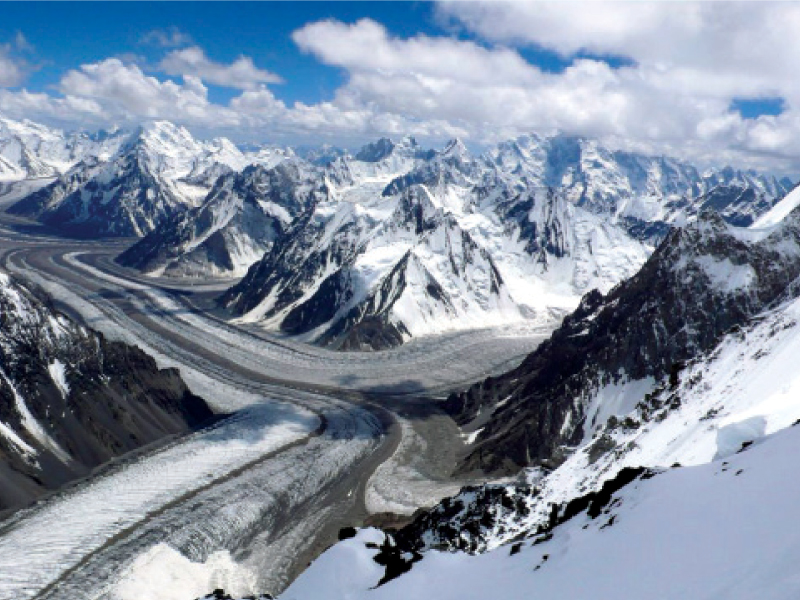
ISLAMABAD:
The glaciers in Karakoram ranges are more stable than the ones worldwide but more data and research are needed to understand their complex behaviour.
These views were expressed by local and foreign experts at a scientific conference on “Karakoram Resources and Climate Change: Glacier, Water and Ecosystem”, organised by EvK2-CNR --- an Italian research organisation that has been working in Gilgit-Baltistan for the past 25 years. The conference was part of a two-day centennial celebration of Italian explorer Fillippo de Fillippi’s 1913 expedition to Central Asia and the Karakorams. The event included a photo exhibition and a mountain film festival.
During a session on glaciers and the hydrological cycle in G-B, glaciologists discussed the “Karakoram Anomaly” --- a term coined by geography professor Kenneth Hewitt to describe the expansion of glaciers in central Karakoram in contrast to declining glaciers around the world. Pakistan has around 5,218 glaciers and water from the glacial melt is crucial for the country’s water requirements but very little data are available about the glaciers.
Christoph Mayer, a glaciologist from the Bavarian Academy of Sciences and Humanities, said glacial changes in the Karakorams are mostly due to “searching” --- when a glacier changes its position but does not necessarily loses or gains mass.
“Glaciers in the Karakorams are more stable than other regions,” Mayer said.
Dr Matthias Winiger, a professor at the Germany’s Bonn University, said unlike the Himalayan glaciers, which are clearly receding, the glaciers in the Karakorams are not.
“It might be due to higher precipitation levels in the mountains in winters,” Winiger said. But he added that different data sets have given different results about the Karakorams in the past --- which means more research is required to provide clarity.
While Winiger suggested localised studies are essential to understand the unique nature of individual glaciers, Mayer proposed a new approach to study the Karakoram glaciers.
Based on his and his team’s work at the Baltoro glacier since 2004, he said debris cover --- the rocks and soil that cover snow and ice and prevent the glacier from melting --- increases toward the glacier and “ablation” area goes down to zero. Ablation areas are where the meltdown of the glacier takes place.
“Debris-covered glaciers will never show any climate signal in changing its area because the snout has no ablation,” Mayer said. “That is the main problem with Karakorams: most of the large glaciers are debris-covered”.
Mayer predicted the glacier would succumb if the debris cover goes away.
“If the debris cover is removed, you would have more than 12m ablation at snout, this tells you that the Baltoro glacier is only there because of its debris cover,” he said. “If you remove the debris, the Baltoro glacier will just disappear in a few years for the first 15-20 kilometres”.
He said change in elevation should be looked at for loss of glacier mass, not just changes in area. Both Winiger and Mayer agreed that more “mass-balance” studies were needed for the Karakoram glaciers.
Pakistan Meteorological Department Chief Meteorologist Dr Ghulam Rasul pointed out that the snow accumulation in the Karakorams has shifted to February instead of November to January. He said late accumulation means the snow might melt before becoming part of the glacier. He said changes in climate in Pakistan are likely to affect weather patterns around the world.
The conference, which was opened by the Italian Ambassador Adrioano Chiodi Cianfarani, also included sessions on biosphere, climate change, disaster management and natural resource management with talks by Italian, Pakistani and German scientists.
Published in The Express Tribune, September 11th, 2013.


































































COMMENTS
Comments are moderated and generally will be posted if they are on-topic and not abusive.
For more information, please see our Comments FAQ